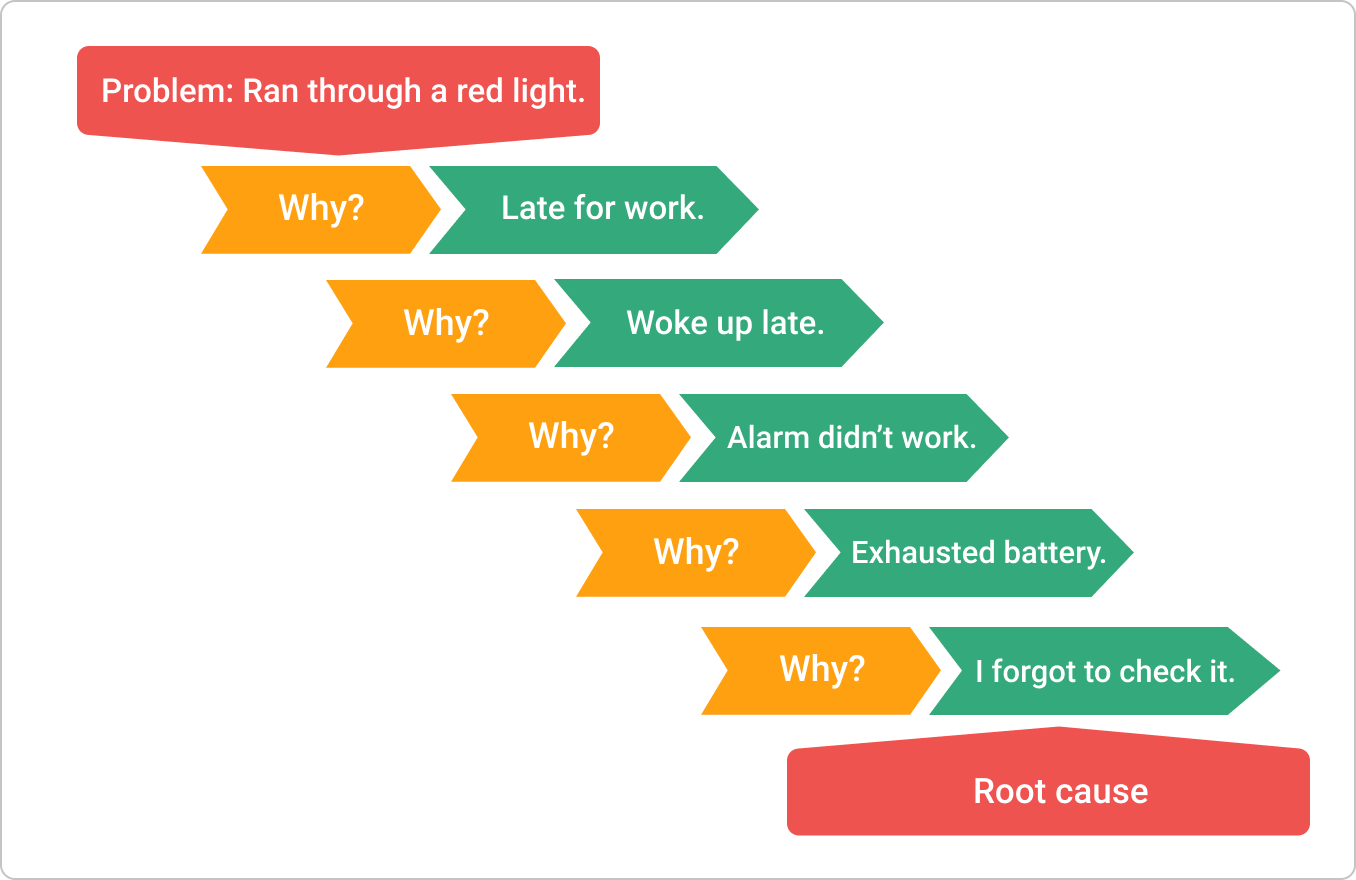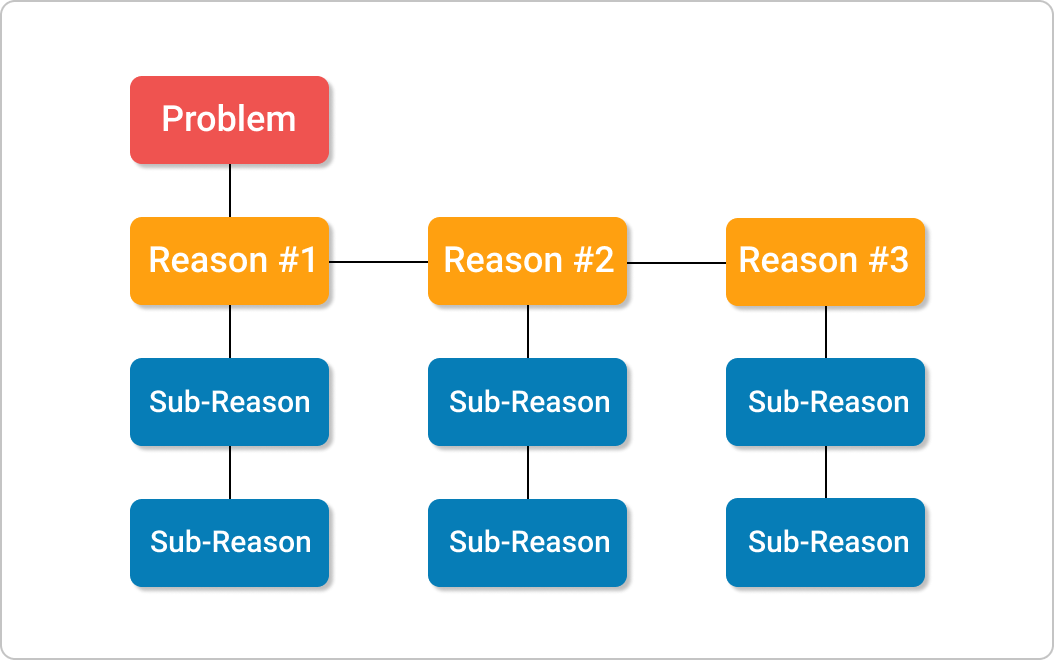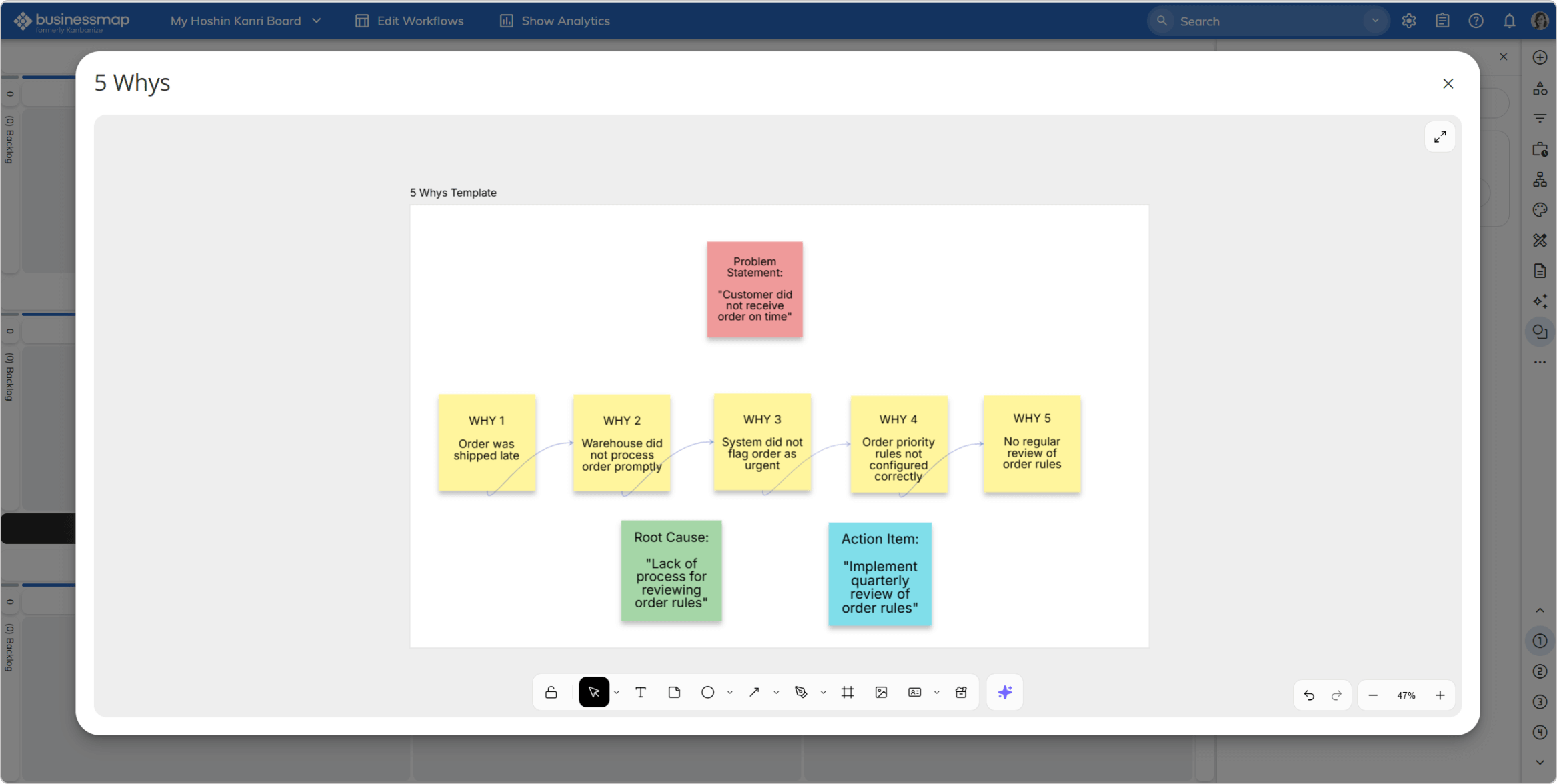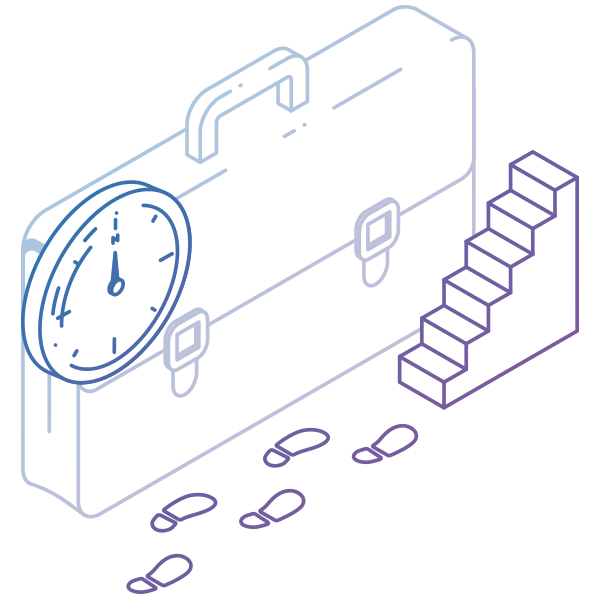Key Takeaways
-
What is 5 Whys: A Lean root cause analysis tool using repeated "Why" questions.
-
Why use it: To uncover and eliminate the actual cause of recurring issues.
-
How to use it: Start by asking "why" 5 times, go deeper if needed - but stay focused.
-
5 Whys template: Use a structured format on digital whiteboards or shared documents to guide and document your session.
What Is the 5 Whys Method in Lean?
The 5 Whys is a problem-solving technique used to uncover the root cause of a problem by repeatedly asking the question "Why?". It's a core practice in Lean management and a key part of continuous improvement (Kaizen).
Originally developed by Sakichi Toyoda and adopted by Toyota, the method encourages teams to dig deeper into process failures to uncover human, procedural, or systemic causes - not just technical glitches.
"By repeating why five times, the nature of the problem as well as its solution becomes clear."
Taiichi Ohno
Why Use the 5 Whys?
When something goes wrong in a workflow, it's tempting to fix the immediate issue and move on. But quick fixes rarely solve the real problem.
The 5 Whys technique is helpful because recurring problems have deeper origins. Without understanding the actual cause, you're likely to repeat mistakes. The 5 Whys helps avoid this by fostering critical thinking and fact-based collaboration across departments.
How to Conduct a 5 Whys Analysis Step-by-Step
1. Build a Cross-Functional Team
Gather people who are directly involved in the process. Those closest to the work are best equipped to provide accurate insights.
2. Define the Problem Clearly
Create a focused problem statement. Avoid tackling overly broad issues to ensure your analysis is practical.
3. Ask "Why?" (At Least 5 Times)
Designate a facilitator to guide the discussion. Start with the problem and ask "Why?" repeatedly until the root cause is uncovered.
- Use real data, not assumptions.
- Don't stop at 5 if you're not there yet - but avoid overanalyzing.
4. Take Corrective Action
Once the root cause is found, define clear actions to fix it. Assign ownership to ensure implementation.
5. Monitor Results
Revisit the issue after some time. Did your action fix the root cause? If not, run the 5 Whys again.
6. Document & Share
Use a 5 Whys template to record the process and outcome. Share learnings to prevent future issues across your team or organization.
What Is a 5 Whys Template?
A 5 Whys template is a simple tool to guide and document your analysis. The template typically includes a series of questions or prompts to guide you through the process of identifying the underlying causes of the problem at hand. Here's what it typically looks like:
- What is the problem?
- Why did the problem occur?
- Why did the reason in question 2 happen?
- Why did the reason in question 3 happen?
- Why did the reason in question 4 happen?
This kind of structure keeps the session focused and traceable.
 Five Whys analysis example
Five Whys analysis example
Who Should Participate in a 5 Whys Session?
- Process owners
- Team members directly involved
- A facilitator (ideally someone neutral)
- Stakeholders affected by the outcome
5 Whys Best Practices
- Base answers on facts and data
- Encourage team input
- Visualize the analysis (use whiteboards)
- Avoid blame - focus on systems and processes
 Visualization of a 5 Whys analysis, including multiple root causes
Visualization of a 5 Whys analysis, including multiple root causes
When and Where Should You Use the 5 Whys?
The 5 Whys technique is perfect for:
- Process delays
- Quality issues
- Missed deadlines
- System outages
- Lean waste analysis
Furthermore, 5 Whys encourage each team member to share ideas, helping to drive continuous improvement.
Thanks to its simplicity and flexibility, you can use the tool in combination with other cause-and-effect analysis tools and methods like:
Real-World 5 Whys Example
Problem: The product update newsletter was delayed.
| Why |
Root Cause |
|
Why 1: Why was the product update newsletter delayed? |
Updates weren't finished in time |
|
Why 2: Why weren't the updates finished in time? |
Devs were still working on features |
|
Why 3: Why were the developers still working on features and not done? |
New dev didn't follow the process |
|
Why 4: Why didn't the new developer follow the process? |
He wasn't properly trained |
|
Why 5: Why wasn't the new developer properly trained? |
CTO assumes new hires don't need formal training |
Root Cause: Lack of onboarding process
You can notice that the root cause of the initial problem turned out to be something completely different from most expectations.
Furthermore, it is not a technological but a process problem. This is typical because we often focus on the product part of the problem, as we neglect the human factor.
Therefore, the 5 Whys analysis aims to inspect a certain problem in depth until it reveals the root cause.
Keep in mind that "5" is just a number. Ask "Why" as many times as you need to complete the process and take appropriate actions.
What Tools Support the 5 Whys?
Digital whiteboards are ideal for documenting, visualizing, and tracking 5 Whys sessions. Lean management software like Businessmap includes integrated boards or AI-assisted templates to align problem-solving with real-time work directly within your work management system.
 AI-generated 5 Whys template on a digital whiteboard in Businessmap
AI-generated 5 Whys template on a digital whiteboard in Businessmap
Businessmap is the most flexible software
to align work with company goals





 Five Whys analysis example
Five Whys analysis example Visualization of a 5 Whys analysis, including multiple root causes
Visualization of a 5 Whys analysis, including multiple root causes AI-generated 5 Whys template on a digital whiteboard in Businessmap
AI-generated 5 Whys template on a digital whiteboard in Businessmap


